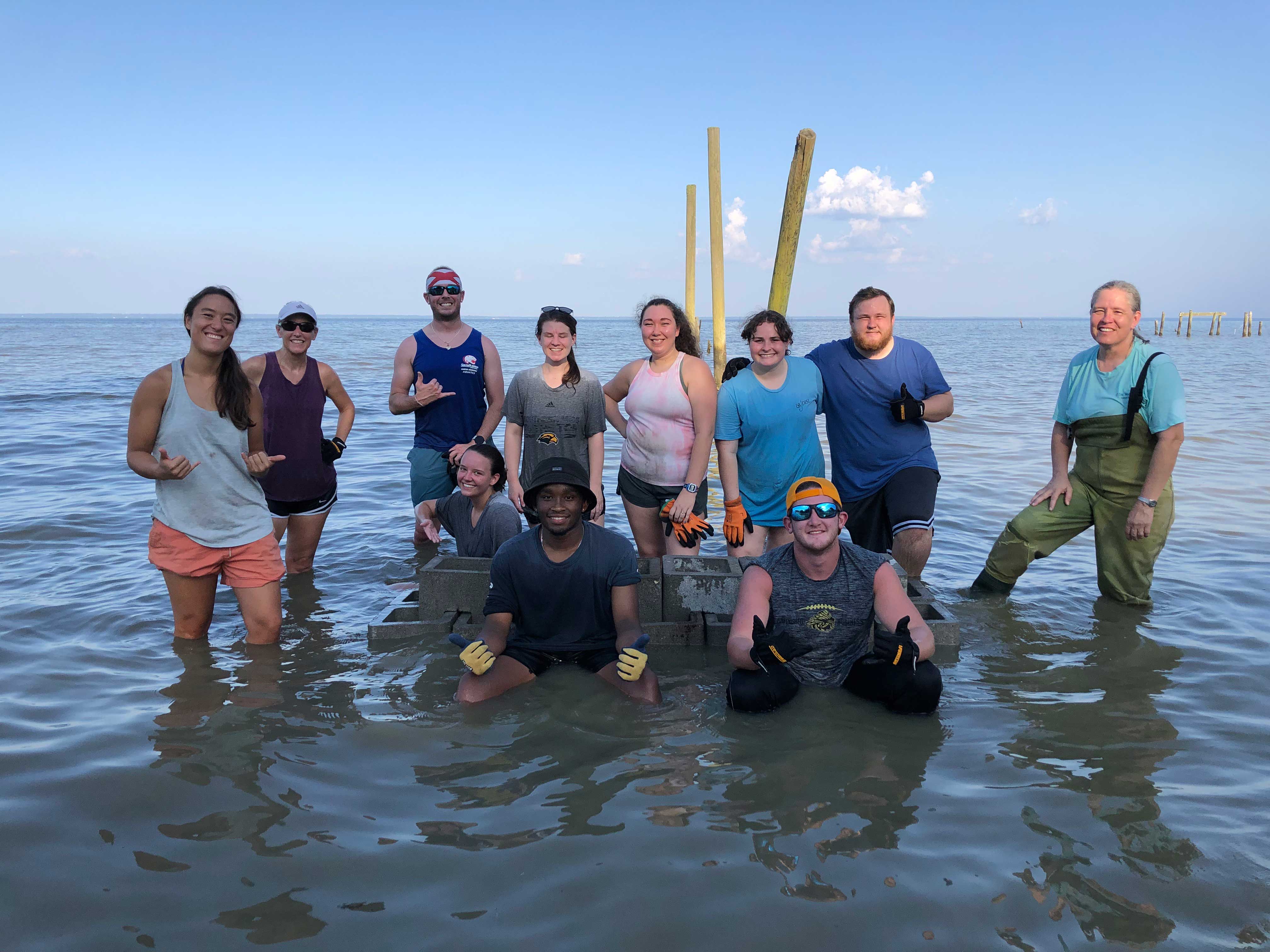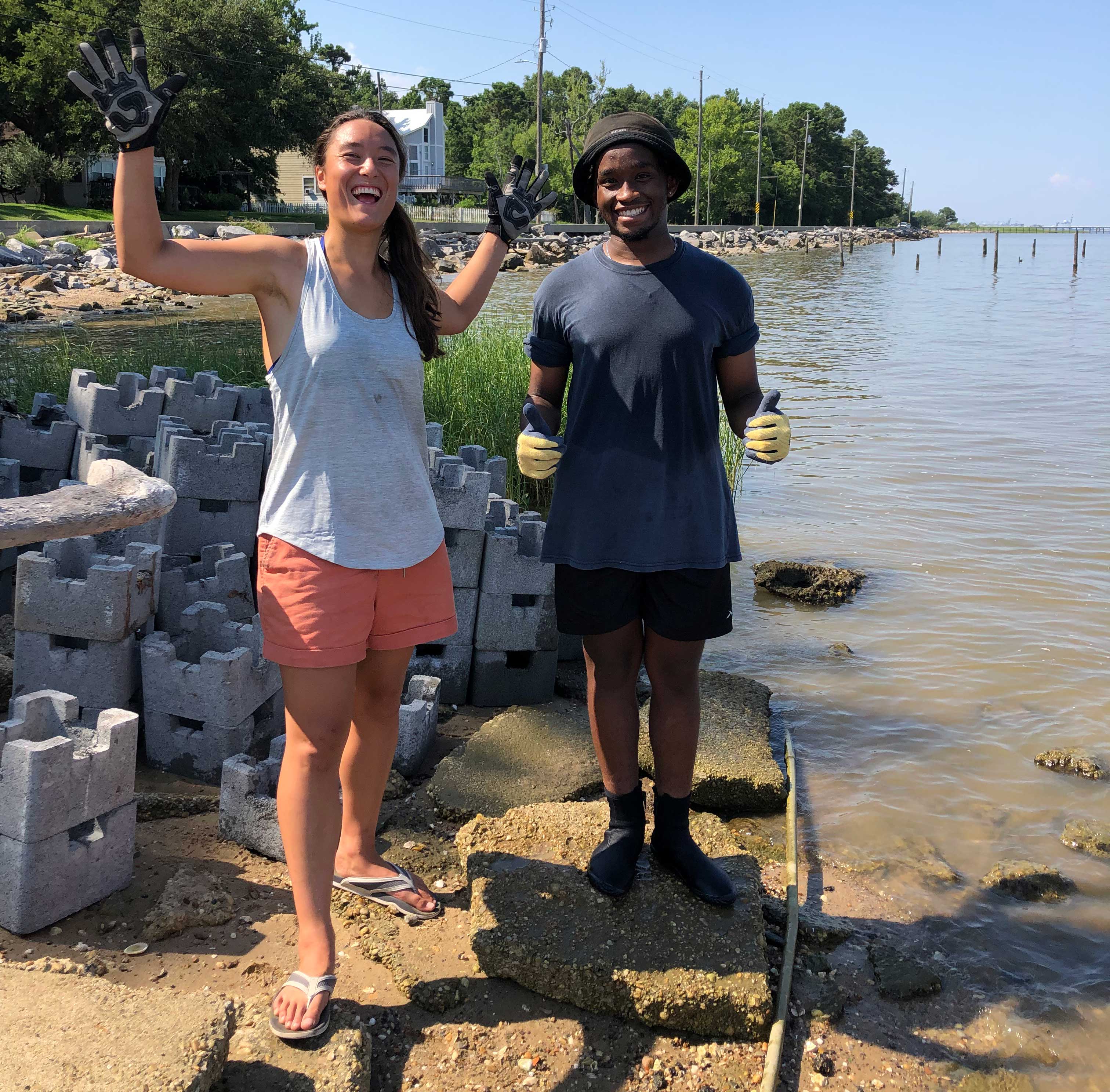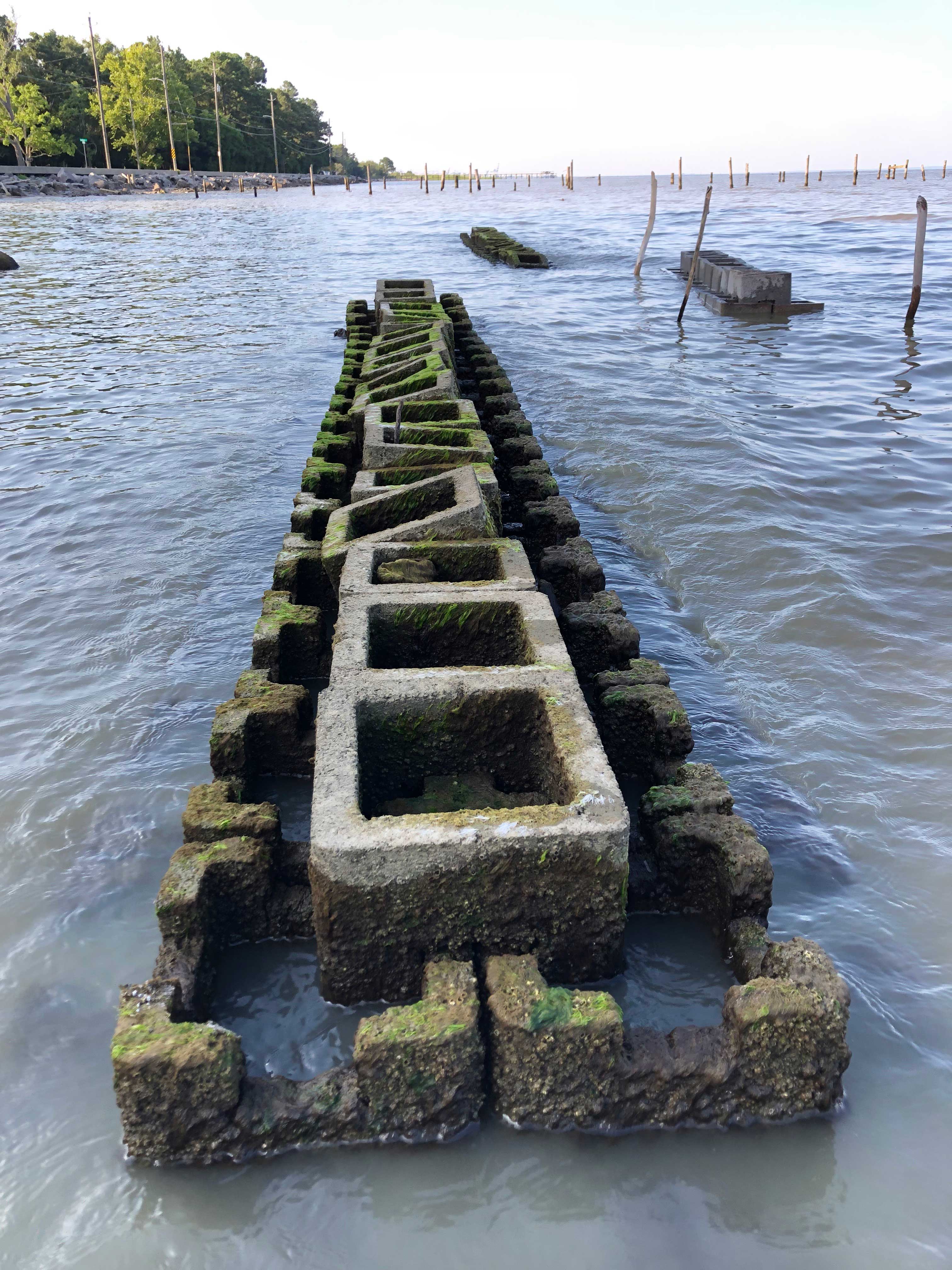(June 27, 2022) --

Dauphin Island Sea Lab summer school students helped build a living shoreline on the bayfront in Mobile. Murphy High School teacher Sharon Delchamps led the project which is a partnership between the Alabama Coastal Foundation, U.S. Fish and Wildlife Service, and the University of South Alabama. The project is funded by a National Fish and Wildlife Foundation grant.
Delchamps said a friend introduced her to Sharon and Ricky Dixon. The couple was looking to prevent erosion on their bayfront property. Before COVID shut the world down in Spring 2020, Delchamps gathered a team that included Murphy High School to build a reef along the Dixon’s bayfront property. The team built five reefs. Two years later, the team returned to add to the reef and prep to plant Spartina, which is a coastal marsh plant. The oyster castles and the Spartina will work together to protect from erosion.

The 2022 team included DISL/REU students Rebecca Carwithen and Kenneth Murage, South Alabama students Cadie Barnes, Katie West, Georgia Vaughn, Houston Huges, Andrew Mills, Tabor Smith, and Nathaniel Roy, Fisheries Ecology Lab Research Assistant Trey Spearman, Bishop State’s Dr. Kathleen Roberts, South Alabama Instructor Dr. Amy Sprinkle, and Delchamps.
The group built the final two reefs with 80 castle oyster blocks for each. They’ll head back in the fall, when hurricane season is over, to plant the Spartina.
Delchamps said her original plan included bagged oyster shells. However, the Alabama Coastal Foundation and Zach Schang with the Florida Department of Environmental Protection suggested the oyster castles, because the wave energy in that area could break down the bagged oyster shell. Wave energy, or the frequency and speed of waves, is a major factor when creating a living shoreline.
“These agencies have been constructing various types of living shoreline projects and are a great resource,” Delchamps explained. “They recommended the oyster castles which seem to be working great.“

Patric Harper with U.S. Fish and Wildlife Service was also very helpful both in the field and in an advisory role for the project.
Dr. Sprinkle adds, “This project is exciting and relevant because it will provide important oyster habitat in Mobile Bay, reduce erosion from wave action, and increase sediment retention on the shoreline. Oysters are one of our best tools to improve water quality. A single oyster can filter 50 gallons of water in a single day!”
Volunteers will help to monitor the living shoreline project.
This project is permitted through the U.S. Army Corps of Engineers.